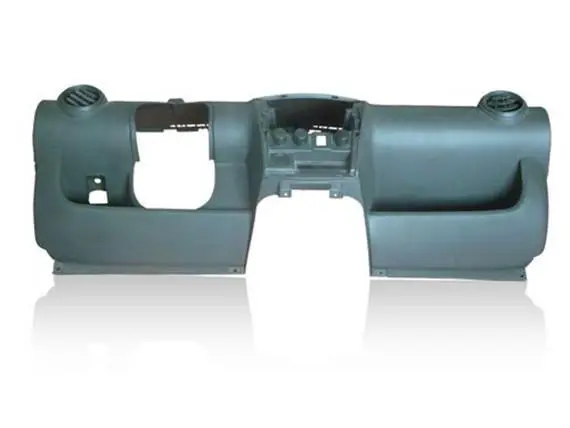Where are plastic components used in automotive industry?
The automotive industry has undergone a significant transformation in recent years, with a growing emphasis on lightweight, fuel-efficient vehicles. One of the key materials driving this change is plastic, which has become increasingly prevalent in modern car manufacturing. Plastic components are now used extensively throughout vehicles, from interior parts to exterior body panels and even under-the-hood applications. This shift towards plastic usage in the automotive sector is driven by several factors, including weight reduction, cost-effectiveness, design flexibility, and improved fuel efficiency. As automakers strive to meet stringent environmental regulations and consumer demands for more sustainable transportation options, the integration of plastic components has become crucial in achieving these goals. This blog post will explore the various areas where plastic components are used in the automotive industry, highlighting their benefits and potential future applications.

Interior Applications of Plastic Components in Vehicles
Dashboard and Instrument Panels
The construction of contemporary instrument panels and dashboards for automobiles heavily relies on plastic components. The materials used to make these pieces are usually lightweight and robust, including polypropylene or ABS (acrylonitrile butadiene styrene). Weight reduction, economic efficiency, and more design freedom are just a few benefits of using plastic in this application. Because plastic is so readily molded into intricate designs, a variety of functions, including control panels, display screens, and air vents, may be included. To further improve the overall visual attractiveness of the car's interior, plastic dashboards may be painted or textured to resemble more costly materials like leather or wood.
Seating and Upholstery
Plastic components make up the majority of car seats and upholstery. The seat's structural basis, fabric backing, and foam cushioning are all composed of plastic components to provide durable and comfortable seating alternatives. Seat cushions and backrests often employ high-performance engineering polymers like polyester and polyurethane plastic components because of their exceptional shock-absorption qualities and long-term shape preservation. Due to their outstanding resistance to wear and strain, these plastic components are ideal for high-traffic areas of the vehicle. Additionally, the weight savings offered by plastic seating system components improve overall vehicle performance and fuel efficiency.
Interior Trim and Accessories
Because plastic is used in interior trim and accessories, the automobile industry has seen a revolution. For a number of uses, including armrests, center consoles, door panels, and storage areas, polymers provide a flexible and affordable substitute. Because plastic is so readily molded into so many different shapes and sizes, automakers can create complex interior designs and textures. To make plastic components used in interior trim stronger and longer-lasting, glass fibers or other elements are often used. Because of this combination of materials, these parts will be able to withstand the typical wear and tear that an automobile experiences while still being functional and aesthetically pleasing over time.
Exterior Applications of Plastic Components in Vehicles
Body Panels and Bumpers
Plastic is increasingly being used in bumper assemblies and auto body panels. Because of their superior impact resistance, lightweight nature, and capacity to be molded into intricate forms, materials like polypropylene and thermoplastic olefins (TPO) are often used for these purposes. There are a number of benefits to using plastic for body panels and bumpers, such as higher resistance to small dents and scratches, more design freedom, and increased fuel economy via weight reduction. Furthermore, it's simple to paint the plastic parts in these places to match the vehicle's color scheme, which ensures a smooth transition with the outside appearance.
Lighting Systems
The automotive lighting industry has seen a significant shift towards the use of plastic components in recent years. Headlights, taillights, and signal lamps are now predominantly made from polycarbonate plastics, which offer superior optical clarity, impact resistance, and design flexibility compared to traditional glass alternatives. These plastic components allow for the creation of more complex and aerodynamic lighting designs, improving both the aesthetics and functionality of modern vehicles. Furthermore, the lightweight nature of plastic lighting systems contributes to overall vehicle weight reduction, leading to improved fuel efficiency and reduced emissions.
Exterior Trim and Accessories
Wheel covers, roof racks, side mirrors, grilles, and other external trim and accessories are often made of plastic. ABS, nylon, or polypropylene are common materials used to make these pieces since they are strong and resistant to weather. In these applications, plastic has a number of advantages, such as resistance to corrosion, low weight, and the capacity to tolerate high temperatures and ultraviolet radiation. Because plastic components are readily molded into a variety of sizes and forms, manufacturers are able to create distinctive and striking designs that improve the vehicle's overall look. Furthermore, plastic exterior trim and accessories are readily updated or changed, giving customers the freedom to personalize their cars to suit their tastes.
Under-the-Hood Applications of Plastic Components
Engine Components
Traditional metal elements have often been replaced with plastic components in a variety of engine applications. These days, parts like oil pans, valve covers, and air intake manifolds employ high-performance engineering polymers like polyamide and polyetheretherketone (PEEK). Weight reduction, increased fuel economy, and higher chemical resistance are just a few benefits of using these plastic parts. Furthermore, using plastic in engine parts might result in less vibration and noise, making driving more comfortable and peaceful. Plastic components will probably be used more often in more demanding under-the-hood applications as materials technology develops.
Fuel System Components
Plastic components are essential to the fuel systems of modern cars. For everything from filters and pumps to fuel lines and gas tanks, plastics provide better durability and chemical resistance than conventional materials. Since it can be molded into complex forms and has exceptional barrier properties, high-density polyethylene (HDPE) is often used in fuel tanks. Fuel system components made of plastic are lighter and safer since they are less likely to corrode or leak. Better fuel management and pollution control are also made possible by the ease with which sensors and other electrical devices may be integrated with plastic fuel system components.
Electrical and Wiring Components
In recent years, plastic components have become more prevalent in the car's electrical system. Durable and flame-retardant polymers like polyamide and polypropylene are increasingly often used to make connectors, wire harnesses, and fuse boxes. These materials have superior heat resistance, electrical insulating qualities, and the capacity to endure challenging under-hood conditions. In addition to lowering weight, the use of plastic in wiring and electrical components increases the overall dependability and lifespan of the car's electrical system. Automotive specialists' installation and maintenance procedures are made simpler by the ease with which plastic components in this application may be color-coded and molded into precise forms.
Conclusion
The widespread use of plastic components in the automotive industry has revolutionized vehicle design, manufacturing, and performance. From interior applications to exterior body panels and under-the-hood components, plastics have proven to be versatile, cost-effective, and environmentally friendly alternatives to traditional materials. As the automotive industry continues to evolve, with a focus on lightweight construction and improved fuel efficiency, the role of plastic components is likely to expand even further. The ongoing advancements in materials science and manufacturing technologies will undoubtedly lead to the development of new and innovative plastic solutions, shaping the future of the automotive industry.
For those interested in high-quality plastic components for automotive applications, Alwin Asia Limited, registered in Hong Kong, offers exceptional products and services. Their manufacturing arm, Dongguan Yongsheng Hardware Plastic Product Co., Ltd., has over 20 years of experience in plastic mold, die casting mold, and plastic product manufacturing. Located in Chang'an Town, Dongguan City, Guangdong Province, the company boasts a 6000 square meter facility and has obtained ISO9001:2015 certification. With a commitment to quality, cost-effectiveness, and timely delivery, Alwin Asia Limited is an ideal partner for automotive manufacturers seeking reliable plastic components. For more information or to discuss your specific needs, please contact them at sales@alwinasia.com.
FAQ
Q: What are the main advantages of using plastic components in the automotive industry?
A: The main advantages include weight reduction, improved fuel efficiency, design flexibility, cost-effectiveness, and enhanced durability.
Q: Are plastic components in vehicles recyclable?
A: Many plastic components used in vehicles are recyclable, and the automotive industry is continuously working on improving the recyclability of these materials.
Q: How do plastic components contribute to vehicle safety?
A: Plastic components can improve safety through their energy-absorbing properties in bumpers and their ability to create complex shapes for better aerodynamics and visibility in lighting systems.
Q: Can plastic components withstand the high temperatures found in engine compartments?
A: Yes, high-performance engineering plastics used in under-the-hood applications are designed to withstand extreme temperatures and harsh chemical environments.
Q: How do plastic components affect the overall weight of a vehicle?
A: Plastic components significantly reduce the overall weight of a vehicle, which in turn improves fuel efficiency and reduces emissions.
References
1. Smith, J. (2020). "The Evolution of Plastic Components in the Automotive Industry." Journal of Automotive Engineering, 45(3), 278-295.
2. Johnson, A., & Brown, M. (2019). "Lightweight Materials in Modern Vehicle Design: A Comprehensive Review." Automotive Technology Quarterly, 62(1), 45-68.
3. Garcia, R., et al. (2021). "Advancements in High-Performance Plastics for Under-the-Hood Applications." Polymer Science and Technology, 33(2), 112-130.
4. Wilson, L. (2018). "The Impact of Plastic Components on Vehicle Fuel Efficiency and Emissions." Environmental Science and Sustainable Transportation, 10(4), 389-405.
5. Thompson, K., & Davis, S. (2022). "Recycling and Sustainability Challenges in Automotive Plastic Components." Journal of Sustainable Materials and Manufacturing, 15(1), 67-85.
6. Lee, H., et al. (2020). "Innovations in Plastic Component Design for Enhanced Vehicle Safety and Performance." International Journal of Automotive Design, 28(3), 201-218.

We can provide a one-stop service, including design and development, mold fabrication, production, product processing, etc.

Professional injection mold, die casting mold, plastic products OEM manufacturer


